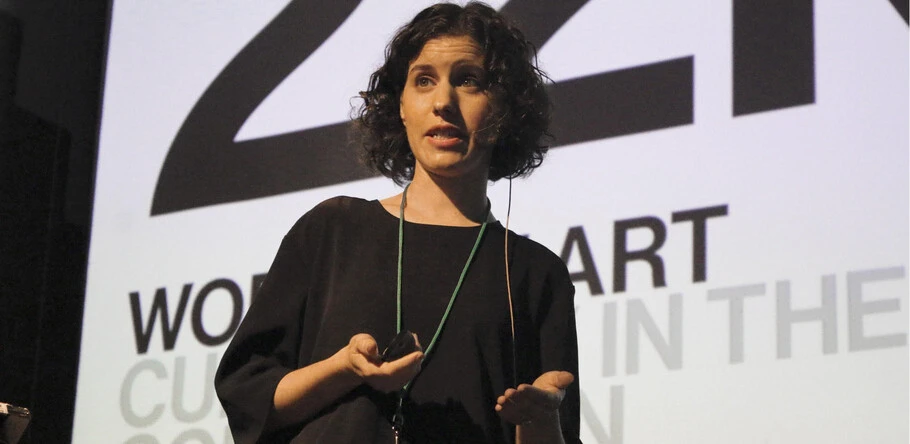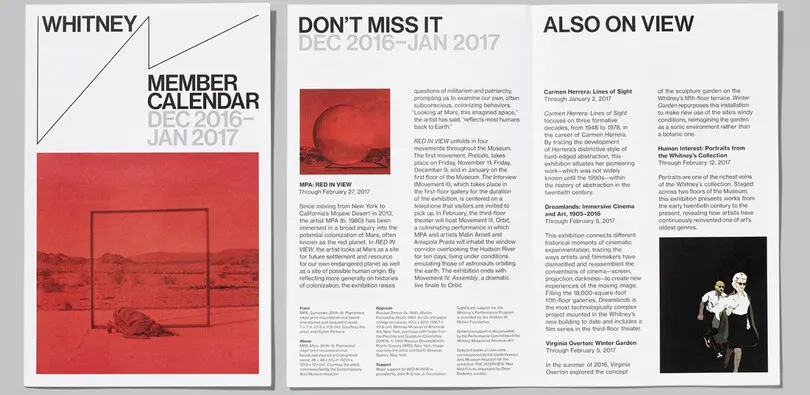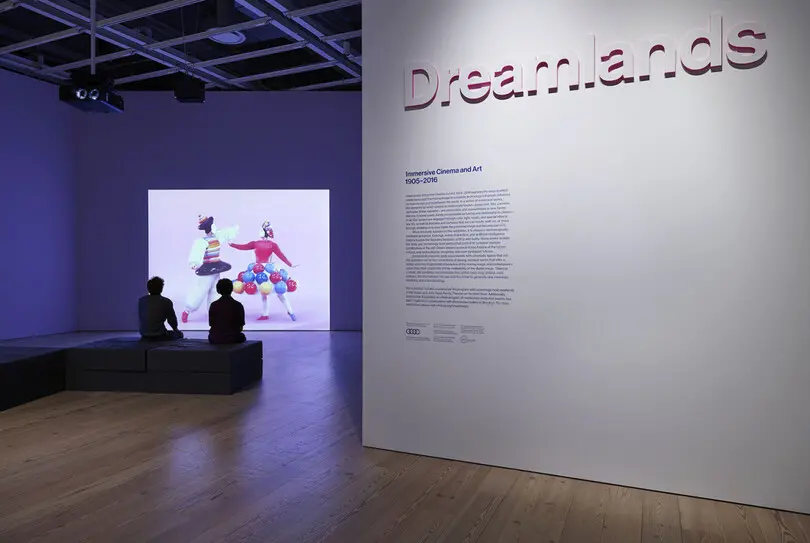How the Whitney uses type to build an identity around art.

Whitney Museum Director of Design, Hilary Greenbaum, walked through her successes and challenges at Typographics 2017, four years removed from launching a new identity for the iconic museum.
The Whitney is known for supporting emerging artists and displaying contemporary, often edgy art. When it came time to overhaul the museum’s visual identity back in 2013, Greenbaum explained that it was imperative to keep the focus on the art while staying true to the museum’s bold perspective.
The solution was an identity system based almost entirely in type. “Typography has been the foundation of our identity,” Greenbaum, told the crowd, and settling on a black-and-white, type-centric approach gave the museum the balance it sought.
The museum uses a tightly tracked version of Neue Haas Grotesk for all use cases, and developed what it calls a “responsive W” to bring a playful element to its designs. The responsive W acts as a logo of sorts, but true to its name it is designed to be flexible and work around the text and other elements. Overall, the system leaves ample white space to highlight the artwork creates a graceful mix of structure and freedom around the type and message.

The Whitney’s identity supports all elements of the museum experience. Neue Haas Grotesk is everywhere, from museum signage, marketing, advertising materials and educational materials such as programs for children, to retail products.
“This puts a lot of pressure on our type to carry the institutional voice throughout,” Greenbaum admitted. But for a museum like the Whitney, and indeed for many brands, maintaining that consistent look and feel is crucial to the experience.
Curators traditionally cater the look and feel of each exhibit based on the exhibit itself (think: wall graphics, brochures), but Greenbaum pushed a different idea. “Any show, whether it’s from our own collection or traveling from another institution, becomes our show once it’s on our walls,” she said. “It comes with a Whitney curatorial focus, and we should always use our typeface and our voice to represent those exhibitions.”
The curatorial team “wasn’t buying it” at first, Greenbaum said. But since it launched, 81% of the Whitney’s exhibits have used the museum’s identity system, which is perhaps the strongest signal of the system’s success.

The design team uses different treatments of the type, such as widened tracking and three-dimension lettering, to mix it up from show to show. And for the 19 percent of exhibits that depart from the Whitney identity, Greenbaum insists on maintaining a contemporary look and feel.
“I think people didn’t see how we could use one font to represent the wide span of artists and selections of artists we use for group shows with just one font,” Greenbaum said. “But I actually enjoy the challenge. So it’s been up to [my team] to figure out how to do that.”











